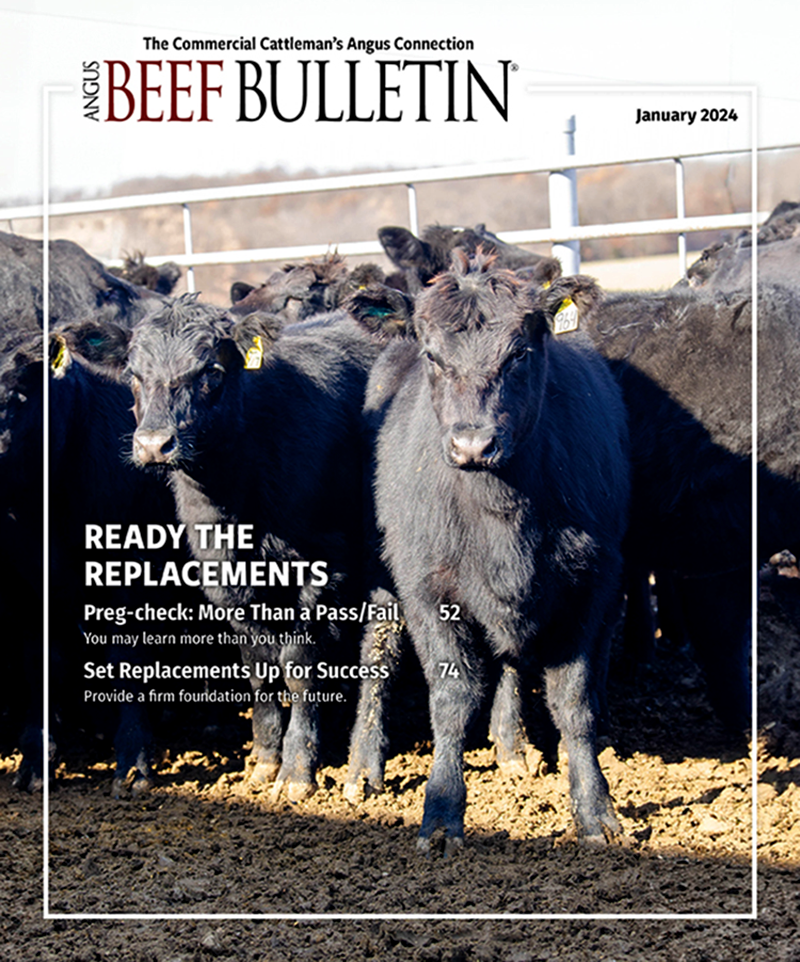
The Link
2024 should be a year to remember.
I’m not a huge fan of New Year’s resolutions; but, as I’ve mentioned before, I like the start of a new year. It is a fresh starting point — a great time to look back at the past to try and discern its lessons, and a great time to look to the future and see what trends are driving change. As they say, no war plan survives the first skirmish. But, the value of planning has never been as much about the plan as the process of putting the plan together.
Two drivers
2023 was an interesting year, but two drivers pretty well dominated. Not surprisingly, weather was one of those.
The widespread drought that affected most of cattle country subsided in the summer of 2023; and grass conditions, for the most part, saw a vast improvement. However, hay and grass reserves were at historical lows coming into the year, and that helped to prevent any widespread expansion.
 |
In fact, 2023 was yet again another liquidation year. Cow slaughter as a percentage of the cow herd continued to be large, and heifer retention extremely low. The predictions for 2024 are varied. But, on average, the predictions are not for extreme drought or wet conditions. Instead, they foresee a more normal year, which should allow for some herd expansion to occur.
Market and economy
The biggest driver in 2023 certainly was the market and the economy in general. Calf prices moved significantly higher as the market began to anticipate tighter supplies. In reality, those higher prices pulled a lot of cattle forward. As a result, the marketplace really hasn’t seen supplies decline as a result.
Overall, beef demand remained excellent, but historically high beef prices have everyone nervous about how high we can push beef prices. This concern has been far more acute. Inflation has reduced disposable income and led to declining consumer confidence overall. Wars in Ukraine and Israel have increased concerns, and there remains a lot of uncertainty about the economy in general.
With that said, the economy and the stock market exceeded expectations and surprised most everyone.
Demand for quality endures
The demand for high-quality beef and the premiums for Certified Angus Beef® (CAB®) product and Prime beef continue to surprise the market experts. The consumer has spoken, and they have spoken definitively in favor of quality.
2023 saw the quality revolution move to the cow-calf sector, with more price differentiation based on genetic merit than ever before. Programs like AngusLinkSM saw explosive growth, as feedyard buyers have begun to vote for quality genetics with their pocketbooks. The economic value of genetics has never been higher, and buyers are using tools like the Genetic Merit ScorecardSM (GMS) as both a risk-management tool and as a way to increase profitability.
Envisioning 2024
Looking forward to 2024, we know we are continuing to look forward to an improving price structure, but with continued pressure from input prices, as well. Expansion is going to be slower than in years past, because higher prices are not leading to corresponding increases in profitability.
Quality is of growing importance, but the definition of quality is also being raised. The monumental shift toward quality genetics, though, will not be welcomed by all. Those who have excelled at the commodity marketing system by marketing below-average cattle at average prices will find the path forward to be more difficult.
Every economic analysis I have ever seen shows we are not discounting inferior cattle as much as we should be, and we are not rewarding good cattle as much as we should be.
Of course, 2024 is an election year, which tends to be a positive for the economy as politicians either avoid big initiatives or offer incentives to earn votes.
2024 promises to be a year of transition, much like 2023 — just at an accelerated pace.
Editor’s note: Troy Marshall is director of commercial industry relations for the American Angus Association.



